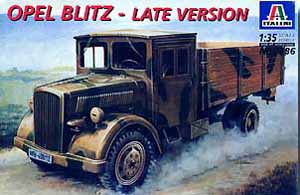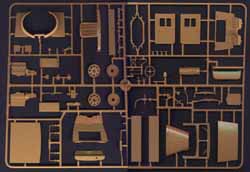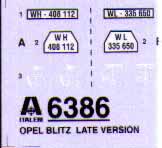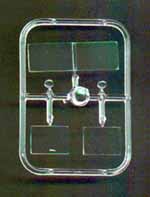ITALERI 1/35 GERMAN OPEL "BLITZ" (LATE VERSION) TRUCK
By Ray Mehlberger
MSRP: $22.00
|
 |
HISTORY
The Opel "Blitz" was the standard, medium weight, truck used by the German Army all through WWII. Tens of thousands were used in every theatre for various roles, including gun carrying platforms.
At the end of 1943, production began on versions of the truck with wooden cabins, instead of the metal ones used previously. This was done to reduce the use of metal materials which became more and more scarce towards the end of the war.
WHAT'S IN THE BOX?:
Obviously, this new kit is somewhat of a re-pop of Italeri's earlier "Blitz" kit, that had the metal cabin, but with a few new parts for the square shaped wood cabin. So, a lot of parts will be common to both kits.
The kit comes in a lid and tray type box. The box art shows a "Blitz" tooling along a road, throwing up a cloud of dust. However, I cannot detect the presence of any driver in the cab, or else the artist does not like to draw figures.
Inside the box are two trees of sand yellow colored styrene parts, a tree of eight black vinyl parts, and a tree of clear parts. I was flabbergasted to see that Italeri used a cello bag on the clear parts, to keep them from getting scratched if they abrased against the other two naked trees. I wish Italeri would cello bag all the trees, as...invariably...I usually find parts broken off the trees, sometimes damaging them at the attachment points.
|
|





